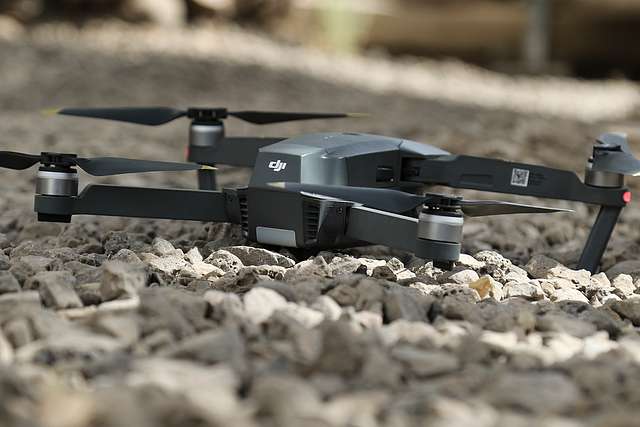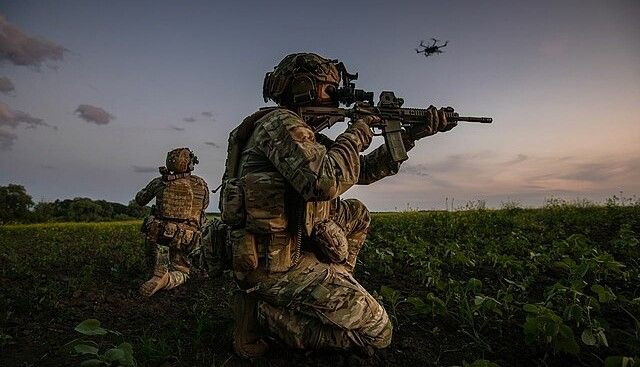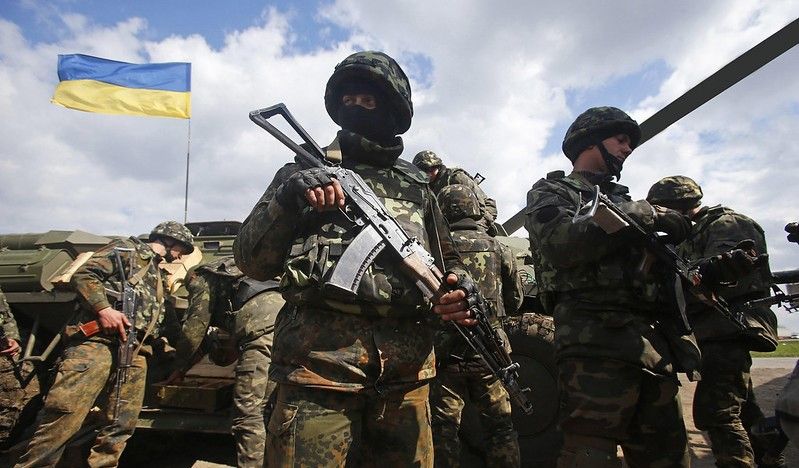The Cheap Tech Saving Lives on the Battlefield
The story of how low-cost drone detectors are making a difference in Ukraine.

Tiny advantages can make the difference between life and death on the frontline in Ukraine, and the latest tool for survival is the drone detector. A handheld device which has become a cheap, yet vital piece of equipment for saving lives.
As Dmytro, the founder of the Ukrainian drone-detecting company Kseonics, explains, if a Russian Orlan artillery-observation drone spots you, “you have three minutes to do something.” Even being in a dugout does not mean that you are safe, as many first-person-view (FPV) drones are smaller enough to enter trench systems or foxholes to kill anyone hiding there.

Ihor Dvoretskyi, a project manager with Ukraine’s Defence Ministry backs up the high success rate of FPV drones, noting that one in every five manufactured makes a kill. And with both Russian and Ukraine deploying up to 50,000 FPV suicide drones every month (according toSamuel Bendett of the Center for Naval Analysis), then it is understandable why there has been a growing demand for weapons and technology which can detect incoming drones and (hopefully even) destroy them.
As Yaroslav Markevich, a drone commander in Ukraine's Khartia battalion states, “Every smart person uses [drone detectors].”
The response from Ukraine has been the formation of thousands of start-up counter-drone companies which are hurriedly designing and manufacturing as many weapons and defence systems as they can. Each striving to meet demand to protect the brave men and women on the frontline.
One such start-up is Kara Dag which manufactures handheld sensors that can detect a drone almost 4km away, sending a vibrating alarm and then informing the user which direction the incoming drone is approaching from.
Drone detectors made by Kara Dag have the unique selling point of using artificial intelligence to assist in identifying a drone's signals, even if it hasn't been detected before or if its speed or other circumstances have interfered with its emission pattern. It can also identify friendly UAVs by using data from Russian social media outlets that disseminate information about Ukrainian drones.
Soon after the invasion, some Ukrainian soldiers began searching the electromagnetic spectrum for telltale signals from enemy drones using software-defined radios, such as the HackRF. These small gadgets were ideal for use by individual soldiers and cost as little as $34. However, they were battery hungry and required support from a laptop to function. They were also never intended for use against military drones and so struggled to accurately identify many drone signals in the crowded battlefield airwaves. Yet they were at least affordable compared to the systems imported from abroad which could cost as much as $20,000.

As a result of the high price of imported technology, the Ukrainian counter-drone manufacturing industry began to flourish by focusing on low-cost, often disposable equipment. It includes companies such as Drone Spices which makes handheld devices for drone detection costing about $250, while more technologically advanced fixed units can cost up to $400.
The company began by simply reverse-engineering the Orlan-10, a drone popular with Russian artillery commanders, to create a device which could spot it in flight and alert those on the ground. However, as the industry journal Defense One reports, “The design was a failure, but inspired the company’s [future] product line, including drone detectors such as ‘Candy’ for Orlans, ‘Salt,’ which scans for Russian’s cell signals, and ‘Cinnamon,’ a detector for the popular DJI-brand drones.” Today Drone Spices sell each device at cost price (for parts and labour) of less than $100.
A further Ukrainian anti-drone start-up is Falcons, which offers a device called Eter which uses “a multi-antenna set-up tied to a computer workstation that identifies the direction and movements of multiple enemy drones.” The system even allows Ukrainian troops to target the Russian UAV operators to determine the drone's point of origin.
However, for now the system can only identify the direction and number of drones approaching. This allows infantry the time to decide if they should take cover or attempt to shoot the enemy drone down.
The company is also working on more ways for how soldiers can identify Russian drones from Ukrainian ones.
“There's a lot of friendly fire on the frontline at the moment,” says Falcons’ co-founder and CTO, Oleksandr. “You just don’t know whose drone it is…you just shoot everything.”

However, the biggest challenge Ukrainian soldiers face is getting their hands on any device to detect incoming drones.
All the Ukrainian start-ups are trying to boost production, but getting sufficient funding, components, and workforce is difficult.
“We’re trying to match the demand, but it’s hard,” says Drone Spices’ Dmytro, whose company is trying to increase output from hundreds a month to thousands per month.
“There's four, maybe three, maybe four manufacturers of these devices,” says Kara Dag’s Ivan in an interview with Sam Skove, a military journalist with Defense One. “And I do not know any of them where you can actually purchase it, because they’re sold out.”
Shipping delays can be an issue, as can funding held up by internal politics in other countries. Meanwhile volunteer labour and donations can be sporadic according to the time of year and global events.
Obtaining funds from the Ukrainian government is another option, such as the Brave1 program operated by the Ukrainian defence technology office. This has awarded Kseonics with a $25,000 grant, while Drone Spices is awaiting news on its application.
These sums may not sound significant, but as any start-up operator knows, they can make all the difference in the world. Because, on the battlefield, there is a high price being paid for not having the right low-cost technology.

